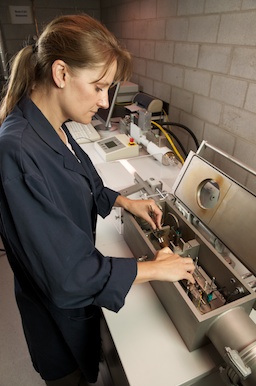Physical Simulation
Physical simulation equipment mimics real-world processes on a laboratory scale and simultaneously monitors key responses of examined material to solve real-world production problems. Knowledge acquired through physical simulation is used to optimize and develop processing parameters. For example, hot rolling of metallic strips and plates is a complex process during which the material undergoes several microstructural changes. The interplay between hot rolling parameters and structural changes determines the properties of the final product. Thermo-mechanical simulators such as hot torsion and the Gleeble simulate the reheating, subsequent multi-pass deformation and cooling stage, while characterizing crucial material responses. This information is essential to devise optimum rolling schedules prior to real-world plant rolling.
Conventional industrial processing entails complex thermal and mechanical treatments. Physical simulation apparatus are capable of replicating these thermo-mechanical routes through a versatile heating/quenching module, a robust hydraulic servo-mechanical loading/unloading system and computers for control and data acquisition. Implementation of various sensors and measuring devices, such as a thermometer (contact and infrared), a load cell, an extensometer (linear variable displacement transformer and laser) and a dilatometer, provides feedback to ensure accurate execution and repeatability of the target thermal-mechanical history.
The physical simulation lab at CanmetMATERIALS consists of four major pieces of equipment: the Gleeble 3800, the BAHR quench-deformation dilatometer, the BAHR hot torsion plastometer and the Netzsch high-temperature differential scanning calorimeter.
Page details
- Date modified:
